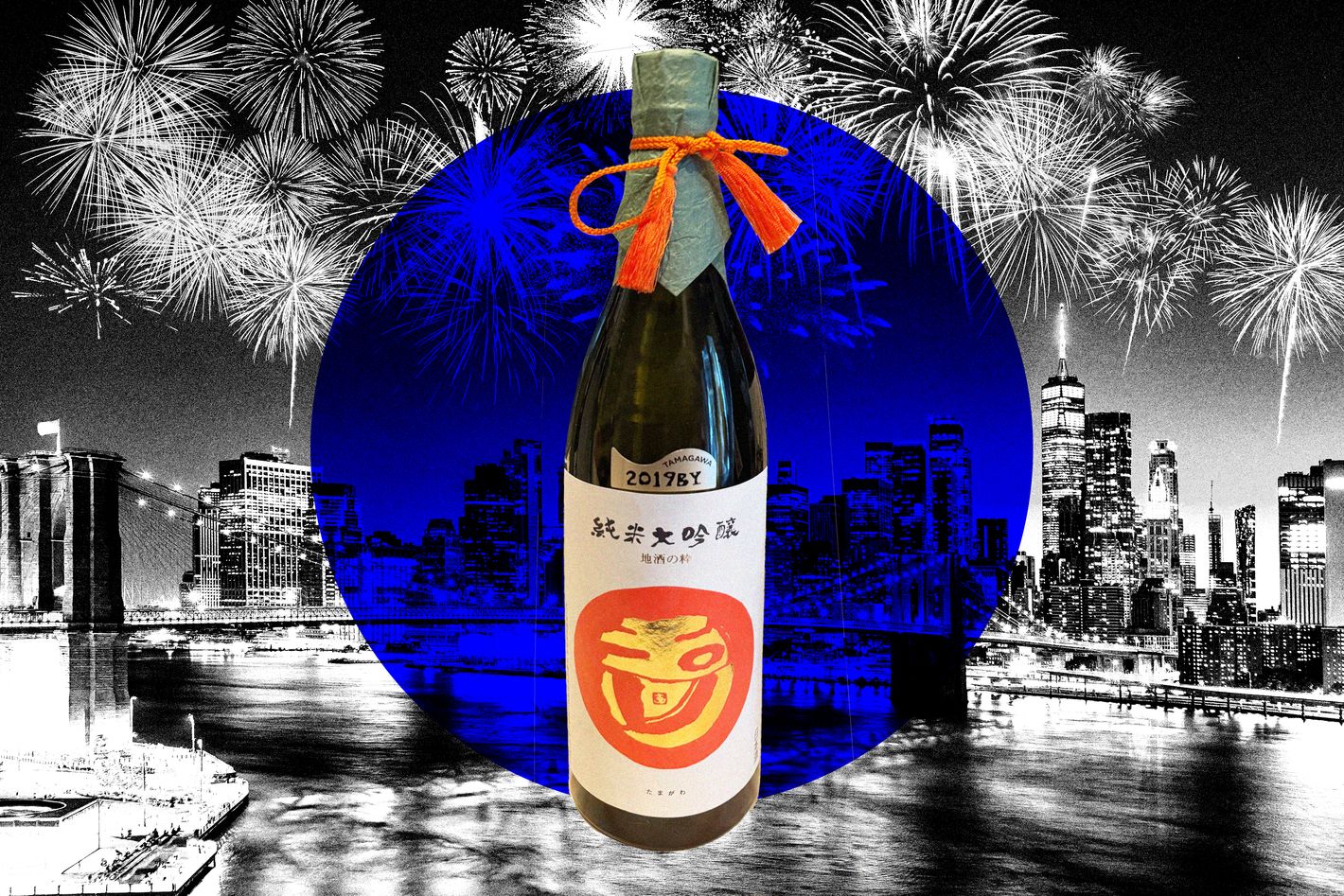when you want, where you want.
This New Year’s Eve, Drink Sake
 Photo-Illustration: Grub Street; Photo Getty Images
Photo-Illustration: Grub Street; Photo Getty Images
While it is true that all alcoholic beverages are popular during the stretch of year-end festivities, there was one category that surprised me during my stint working at Astor Wines, a period of time that encompassed three holiday seasons. Every New Year’s Eve, we had salespeople dedicated to the Champagne department, and others to restock refrigerators with every provenance and price point of sparkling wine more generally. And every year, managers also reminded us that someone needed to pay extra attention to the sake section, a zone that never saw too much traction otherwise.
My first year on sake duty, an older woman asked for help picking out a single great bottle for over $100. Curious, I asked her why she was choosing sake over the more conventional choices. She didn’t seem to already be a connoisseur, and usually, when people had this type of criteria, it was meant to be a gift rather than for personal consumption. “I don’t like bubbles,” she said, “but I still want to toast with something special at midnight,” adding that sake seemed appropriately auspicious, in addition to looking beautiful on a table. I set her up with a bottle of Kirinzan junmai daiginjo, in faceted sky-blue glass, and found myself convinced that I need to start partaking in the same tradition.
With an alcohol content that can range from 14 to 18 percent, there’s an impulse to compare sake to wine, but there are many particularities that don’t translate directly. Sake can be salty, sweet, or both at the same time, but it is rarely tart. Aromas can hover fruity — melon, grape, peach — or grainy like the steam from a rice cooker, while others are so umami rich and meaty that they are almost brothlike. That might sound less appealing initially, but this is the sake that harmonizes with sweetly glazed seafood, or savory soup — especially if it’s warmed slightly.
But this is a celebration and it calls for premium sake, which is classified by how much the rice was polished before brewing. The quick explanation is that protein is concentrated in the grain’s outer layers, so when that part is removed, it leads to lighter, more delicate brews. Honjozo means that 30 percent of the rice was polished off. For ginjo it’s 40 percent, and daiginjo is made from grains that have been polished down by half or more. Prices generally skew higher as the polishing ratio increases. Here’s where it gets a little more complicated: If a sake is labeled junmai, which means “pure rice,” it indicates that the grains were polished by at least 30 percent and that no distilled alcohol was used in the process, which in the past was added to stretch the volume, but has become a stylistic choice in modern times because of the effects on the texture and preservation. Some other useful terms are nama, which is unpasteurized sake that has a shorter shelf life but more upfront flavors, and genshu, which is undiluted, leading to higher alcohol and more body.
These are far from the only variables — many sakes specify the rice used, or the source of the yeast, and the prefecture where it was produced — and this all makes it hard for the sake curious to know what you’ll get in a given sake. Luckily, this city is filled with shops that can help. Sakaya in the East Village was New York City’s first sake shop, and the same couple who opened in 2007 is celebrating the store’s 17th anniversary this month. I have yet to visit Kuraichi in Industry City, but have heard great things, and their online inventory is extensive. For those who prefer bubble, the selection at Bin Bin Sake, which opened adjacent to Rule of Thirds in Greenpoint in 2022, includes several sparkling options like the Bijofu Schwa, which costs $22 for a 500ml bottle. It’s got a nice sweetness and a powerful bubble: It would go well with a charcuterie plate. Prosciutto, tinned fish, and anything fried are all great pairings with sake, as is cheese. (Bin Bin manager George Padilla says the first time he had Joto’s nigori with cheddar was “revelatory.”)
Monica Samuels, a sake educator, says that for New Year’s Eve, specifically, she would choose Daishinsyu Equilibrium with its “rose and pineapple nose” and “powdery mineral finish.” It’s usually in stock at Convive on Avenue A. Personally, in addition to all of the other holistic observations, I also like to go for the lore. One of my favorite picks has an added message. It’s Wakatake’s ginjo “Onikorishi,” a name given to dry sakes from many breweries. That last part means “demon slayer,” and it’s a fitting way to welcome in 2025.
Related
All Rights Reserved. Copyright , Central Coast Communications, Inc.